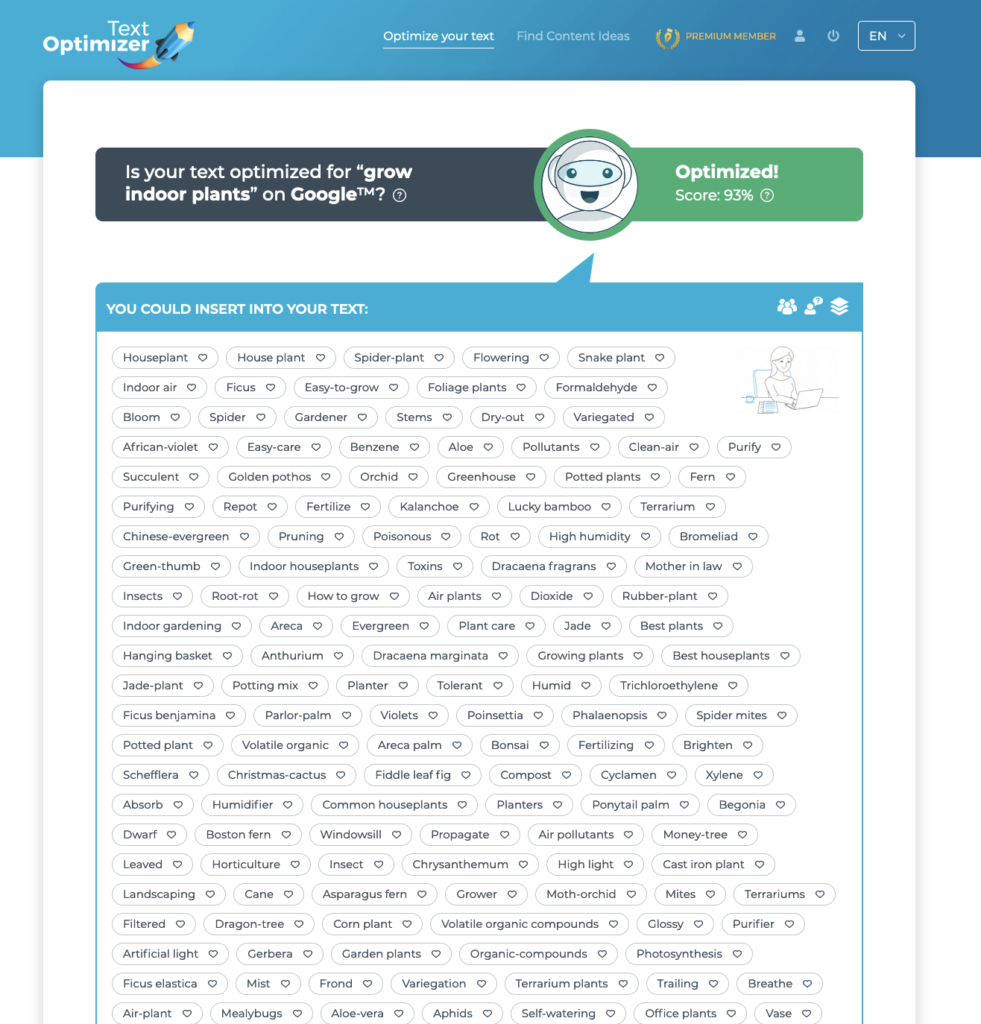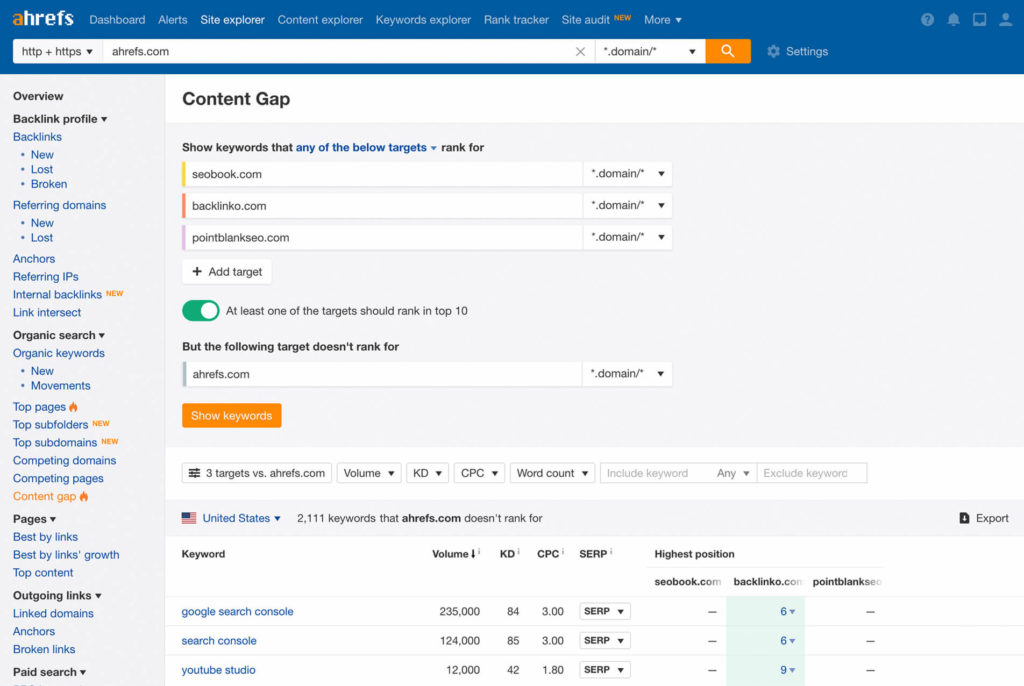

Analyzing and monitoring your competition is fundamental to business success.
From Fortune 500 companies to startups—businesses need an idea of where they stand in the marketplace. Most importantly, they need to know how to use that information to help them stand out.
That’s why competitive reports are such a huge part of business success. It’s a roadmap telling you what to do, what to avoid, and what to try. Without it, you’re attempting to get from Point A to Point B with a blindfold on. With it, you’ve got supervision.
Competitive reports look at competitive benchmarking, competition overview, SEO strategies, and more. Ecommerce businesses, SaaS businesses, and marketing agencies can use them to figure out their short-term and long-term plans.
Every business owner has two options:
- Know what the future can hold for their business
- Guess and hope the future is bright
We’ll take the first option—and we’ll bet you will too.
What should a good competitive report include and how do you take what you’ve learned and apply it?
Why Does My Business Need a Competitive Report?
Businesses need competitive reports for 4 reasons:
- To better understand your target audience by research how they find and engage with your more established competitor
- For market research: Understand what is currently available on the market and where your business fits in
- To get an estimate of your future marketing budget
- To identify effective marketing tactics, etc.
Competitive reports are much more than copying your successful competitor’s marketing tactics. It’s actually nothing close to that because copying would never bring you ahead. (If you need marketing ideas, check out DigitalMarketer Lab!).
Competitive research is about understanding your target market and distinguishing your unique value proposition and consequently your unique marketing strategy to conquer it.
Competitive Research = How are your competitors doing and where you do stand in comparison?
Your Brand’s Unique Identity = What’s your USP (and how does it differ from the competition)?
Original Marketing Ideas = Your brand’s unique identity strategically creating awareness, engagement, and conversions using competitive research to know how to stand out from the competition!


Every competitive report needs 6 parts for a holistic understanding of your competitors, how your brand identity makes you unique, and what original marketing ideas come from it.
Competitive Benchmarking
Competitive benchmarking means collecting the performance data of your competitors and comparing it to your business. You can use these metrics to measure and monitor your business performance against your competitors. For example, if your competitors are ranking for the 3 top spots on search engines, you want to see where you’re ranking for those same topics. Are you slightly below them or on no-mans-land page 2?
You can choose your own performance indicators to track and compare. These may include:
- Public traffic data (from tools like Ahrefs, Alexa and Similar Web)
- Organic rankings
- Brand awareness and sentiment (based on brand mentions), etc.
These performance indicators are your KPIs. They’re a fundamental part of your competitive report, but don’t consider your competitive report written in stone. It’s a fluid document meant to help you identify opportunities. Adjust it as needed (especially if your KPIs change in the future).
Competitive Benchmarketing needs to answer the question: What are your KPIs?
Basic Overview of the Competition
Aside from your KPIs, there are secondary metrics that will help you find competitors to keep an eye on. These aren’t your primary metrics (a.k.a your KPIs), but the smaller metrics that still tell you a lot about what that competitor is doing and where you stand in comparison.
These secondary metrics are things like:
- Backlinks
- Organic traffic
- Social media followers
- Social media engagement, etc.
Tools like Ahrefs, Keyhole, and Similarweb will help you collect all this necessary data.
Basic Overview of the Competition needs to answer the question: What are our secondary metrics of focus?
Detailed Dive into Organic Search Engine Optimization Tactics
There are two types of marketing interruption-based and intent-based. Interruption-based marketing is all the sponsored posts on your Instagram or Facebook newsfeed. It’s the commercial before your Hulu show or the ad in the middle of the YouTube video you’re watching. Intent-based marketing is more focused on answering someone’s question. When someone looks for a “black bookshelf” on Google, they have the intent to find a black bookshelf. Intent-based marketing helps your black bookshelf show up in their search results.
You can use Google Smart Shopping to get in front of the right audience and you can use organic search engine optimization tactics. Look at some key search engine optimization tactics your competitors are using:
- Which keywords are they focusing on?
- How are they optimizing their title tags and meta descriptions?
- Are they optimizing their old content and how often?
- What does their site architecture look like?
- How are they organizing their main navigation?
- What’s their internal linking strategy?
- What are their most successful pages (i.e. those that rank for the most competitive search queries)?
- What’s their semantic optimization strategy?
Try running a few of the most important pages through a tool called Text Optimizer to determine whether your competitors are doing a good job optimizing for search intent:


One of the most actionable steps here is to look at Content Gaps, i.e. researching which keywords your competitors are ranking but your site is not. This is a great way to expand your content strategy to include new keywords. Ahrefs provides this analysis, so it is both easy and effective:


Organic Search Engine Optimization Tactics needs to answer the question: What organic SEO tactics are our competitors using, where do we stand, and where are there opportunities for us to rank higher?
Competitors’ Backlink Research
Backlink research is important for many reasons but don’t just use it in an effort to “steal” some of those tactics or claim some of those links. Remember, you don’t need to copy marketing strategies from your competitors. You just need to figure out what they’re doing to see the gaps that you can fill.
Look at a bigger picture:
- Who are your competitors’ promoters (i.e. people who link to them) and how did your competitors win their hearts?
- Which PR tactics seemed to work best for your competitors and why?
- How are they utilizing content to generate backlinks?
The purpose of competitive backlink research is to understand what works for niche publishers and how you can build your own long-term relationships with them to outmatch your competitors in the long run. There are quite a few backlink checking tools that would help you create this report.
Competitors’ Backlink Research needs to answer the question: What’s our competition’s backlink strategy, where do we stand, and what opportunities are available for us?
Social Media Growth and Engagement
This section of your competitive report is an overview of your competitor’s social media channels. Some of the companies you research could be direct competition but others could have a similar audience and you’re figuring out what garners attention and engagement.
Create a quick chart summarizing your competitors’ active social media channels, number of followers and friends, and their overall activity. Use these metrics as either your goal or numbers you want to far surpass.
Keyhole can help you with this section:


Social Media Growth and Engagement needs to answer the question: What are our competitors doing on social media and what are companies with the same customer avatar as us doing?
Social Media Tactics to Take a Note of
While researching social media growth and engagement, you probably came across some inspiring ideas. Things that you haven’t done yet, but you know your audience would love (and engage with!).
Highlight some creative tactics your competitors are using on social media. In this section, forget about numbers! Highlight what you find ingenious. You’re not looking for what yielded great results, you just want ideas that your brand could take action on. My advice: take lots of screenshots!
- Did your competitor use humor when replying to a customer?
- Did you like their video they uploaded for a holiday?
- Was their sponsored update particularly creative and attention grabbing?
- Did they manage to get attention from a niche influencer?
- Did you like the idea behind their social media contest or poll?
This section is supposed to inspire your social media team. Discourage them from copying anything your competitor did on social media (this could quickly turn into a reputation crisis). Instead, let this section be a conversation starter for your team to come up with their own ideas.
Social Media Tactics needs to answer the question: What strategies should be we implement on social?
Every Business Needs a Competitive Report
It’s impossible to name a business idea or model without competition. There’s competition to get to space these days, and we’ll safely assume the competitive reports from those companies are hundreds of pages and a foot thick when printed.
A competitive report is one of the keys to marketing success. But, you have to make it actionable, or else it will collect digital dust on your desktop. Use it as a starting point for your brainstorming meetings and continue to bring it up as you ideate new marketing strategies.
Distinguish tactics to discuss and use unified communications to come up with the ideas to improve and expand those tactics, as well as find unique angles and maintain your brand identity.
Because a competitive report is like getting a crystal ball and getting to ask it what the future of your business is.
The only difference is that you have to put work into creating that future, but luckily your competitive report is telling you exactly what to do.
If you need marketing inspiration from the top marketers around the world, you can join DigitalMarketer Lab to access Insider Trainings, Workshops, Playbooks, and Certifications. Learn what’s working in Facebook ads today, how to use Google Smart Shopping, and how to turn brand awareness into net profits.


Ann Smarty
Ann Smarty is the brand NINJA at Internet Marketing Ninjas as well as the founder of numerous startups including MyBlogGuest, MyBlogU, ViralContentBee, TwChat and many more.
Ann Smarty has been an online marketing consultant for 10 years providing high-quality digital marketing consulting through her services and courses (both free and paid).
Ann Smarty’s content marketing ideas have been featured in NYtimes, Mashable, Entrepreneur, Search Engine Land and many more. She is known for her indepth tool reviews, innovative content marketing advice and actionable digital marketing ideas.
















